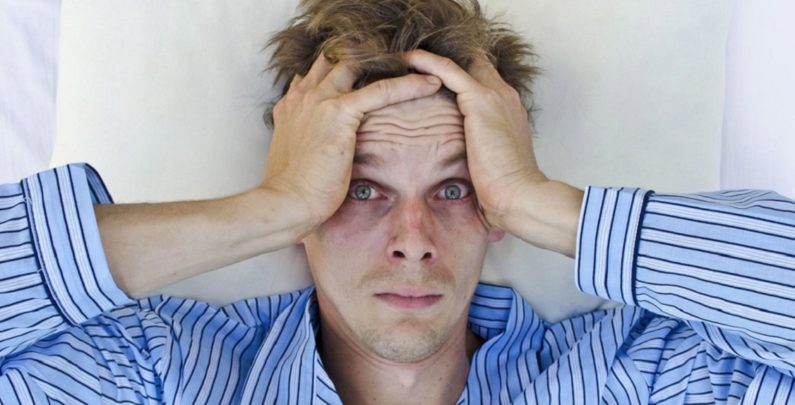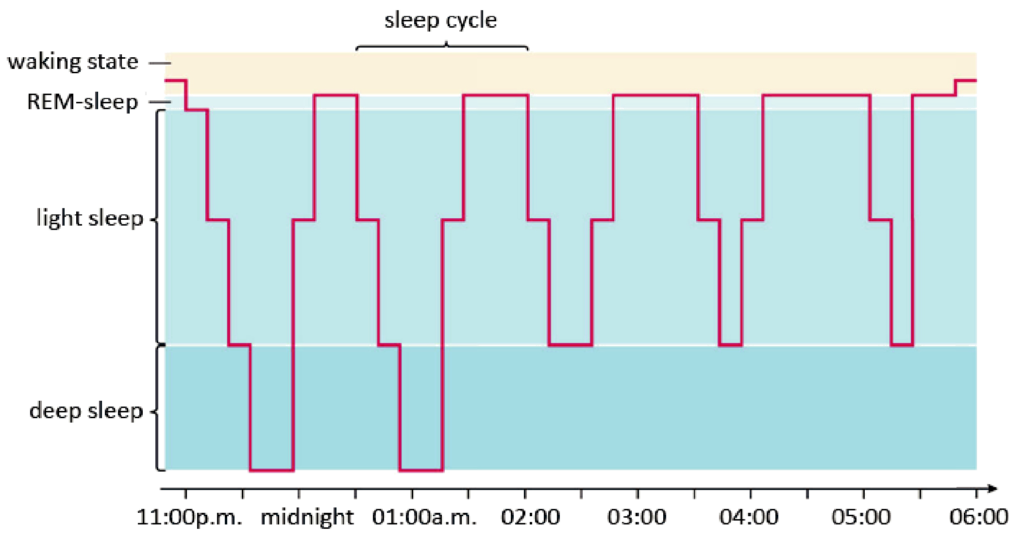
Sleep Disorders and Insomnia
Why Healthy Sleep Matters
We all know that good sleep is essential for our wellbeing and overall performance. But if we take a moment and reflect, we probably catch ourselves far too often neglecting essential rest. So it is not surprising that sleep disorders are a common problem in our busy lifestyles today that is associated with a variety of physical and mental health disorders as well as high economic costs.
But the raw numbers are alarming: About one in three suffers from clinically relevant sleep disorders, and about one in five additionally reports poor sleep quality.
In this article, we want to take a closer look at what sleep exactly is, why it matters and how PEMF could help improve sleep induction and quality.
Sleep disorders are a common problem that is associated with a variety of physical and mental health disorders as well as high economic costs. About one in three suffers from clinically relevant sleep disorders, and about one in five additionally reports poor sleep quality.
Sleep disorders are often not easy to diagnose. They can have organic or psychological causes. They can be a sign of or the result of depression. However insomnia is not a specifically defined disease, but there are always several factors to consider. In the short term, we can cope with a lack of sleep quite well, in the long run, enough rest and good quality sleep are fundamental for health, performance, and zest for life. Left untreated, sleep disorders can not only lead to prolonged fatigue and loss of performance, but also to long-term consequences such as stroke, heart attack or immune deficiencies.
In general, a distinction is made between trouble falling asleep and staying asleep as well as so-called early morning awakening.
Circadian Rhythm
The circadian rhythm is the ability of our organism to synchronize physiological processes to a period of about 24 hours. The most important circadian rhythm is the sleep-wake rhythm. This inner clock is indispensable for our sleep. It is influenced by external timers and biological rhythms, but especially by the light. It causes the formation of the hormone melatonin in the pineal gland, which in the evening switches our body to fatigue.
Sleep Is A Cycle
Every night we go through four to five sleep cycles. They consist of light sleep, deep sleep, and the REM phase. REM stands for “Rapid Eye Movement”, and is often referred to as the dream phase. The pattern of a healthy sleep is individual for each person, but basically similar. Each cycle lasts 90 minutes on average and then starts all over again.

- At the beginning when we are falling asleep, sleep is very light. If you are awakened in this phase, you might think you haven’t slept at all.
- This phase is followed by deep sleep – fatal if disturbed or missing. Most important is the first deep sleep phase after falling asleep. It is the longest with about an hour. During the night, the deep sleep phases become shorter and sleep gets lighter again.
- In the morning there are several REM phases. The brain is particularly active, we dream intensively. However, the body is paralyzed at this stage – which prevents us from physically living out our dreams.
This cycle is repeated several times until the deep sleep phases become shorter and REM phases get longer in the morning. While sleeping we do not remain idle during these cycles – no one lies motionless for eight hours and sleeps. Instead, we turn around our own axis several times in our sleep, wake up without realizing, maybe sit up for a moment, lie back down, and go back to sleep. Nobody will remember these short, meaningless interruptions. If you wake up feeling refreshed in the morning, you probably slept well.
Science, PEMF and Sleep
Several studies have shown that PEMF therapy can have beneficial effects on sleep quality in a number of ways. For example, by synchronizing the brain waves and calming the brain activity, regulating circadian rhythms or improving stress management.
Stress, whether physiologic or emotional, can affect circadian rhythms. Research was done in Germany in the 1960s through the 1970s, in a deep bunker, deprived test subjects of external stimuli such as temperature, humidity, light, sound, and even the natural magnetic field of the earth. These individuals all ended up having disturbed circadian rhythms. They found that weak square wave 10 Hz electromagnetic fields reversed the effects of these disturbed circadian rhythms. 1
Magnetic fields from a small 0.5 mT (5 gauss) 4 Hz generator were tested in a double-blind study. Effects on sleep were studied prior to treatment and after two and six weeks of treatment. They found that this field and intensity was effective in reducing sleep disturbances in 83% of the exposed group, compared with 57% in the controls. There is a strong impact psychologically of someone being studied, and changes are seen even if a placebo device is being used (called the Hawthorne effect). Nevertheless, the people receiving active treatment consistently had better results for sleep whether it was at two weeks or six weeks. Results were stronger at six weeks. 2
In a four-week double-blind, placebo-controlled study, impulse magnetic-field therapy was tested for insomnia. A hundred people with insomnia were randomly assigned to either active treatment or placebo. They fell into one of three groups: (1) trouble falling asleep, (2) interrupted sleep, or (3) nightmares. The researchers looked at sleep latency (how long it takes to fall asleep), frequency of interruptions, sleepiness after rising, daytime sleepiness, difficulty with concentration, and daytime headaches. In those with active treatments, the values of all criteria were significantly improved. As is often seen with this kind of research, the placebo group also had significant symptomatic improvement. However, the differences between the two groups hugely favored the active treatment group. Some 70% of the people given active treatment experienced substantial or even complete relief of their complaints, 24% had clear improvement and 6% slight improvement. In the placebo group, only one patient had clear relief, 49% had slight or clear improvement, and 49% saw no change.
No one had any adverse effects. The PEMF therapy helped about 90%, versus only about 50% in the placebo group. This study was useful in showing that most basic types of sleep problems can be substantially helped with the use of PEMF therapies. 3
1 Wever RA. The electromagnetic environment and the circadian rhythms of human subjects. In: Grandolfo M,
Michaelson SM, et al. Biological Effects and Dosimetry of Static and ELF Electromagnetic Fields. Plenum Press, New
York, NY. 1987.
2 Fischer G and Kokoschinegg PJ. The treatment of sleep disturbances and meteorosensitivity by pulsed magnetic fields of low intensity y. Bioelectric 9(2):243 Third Symposium on Magnetotherapy and Magnetic Stimulation, 12-14
October 1989, Hungary, 1990.
3 Paleka RB, Jaenicke C, et al. Impulse magnetic-field therapy for insomnia: a double-blind, placebo-controlled study.
Adv Ther Jul-Aug; 18)4):174-180, 2001.
Better Sleep and HGH Secretion
After pain relief, the most positive feedback we receive from people is better sleep and relaxation. It is estimated that 60% of Americans have trouble falling asleep according to the National Sleep Foundation (stress, apnea, stimulation, complications medication, etc.). Even healthy people can have intermittent nights of restlessness and lack of deep sleep.
If you use a PEMF therapy mat with a proper biorhythm clock, it will have a nighttime setting with theta-delta frequencies that help induce the brain with the commonly known frequencies for sleep and deep relaxation (delta and theta frequencies are around .5-7 Hz). These pulsating magnetic frequencies at the lower theta and delta frequencies directly and tangibly assist the mind and body to have a deep and rejuvenating nights rest. Users with an earth-based PEMF therapy mat noticed they got to sleep easily and slept deeply. Using PEMF therapy daily, they have no more problems sleeping soundly every night. We’ve heard directly from hundreds of users that better sleep is one of the first things they notice, and it was one of the most important factors to their healing and recovery. We’ve heard many stories of people with serious health issues who had terrible insomnia. They felt tired, sick, depressed, day in and day out. After JUST ONE NIGHT of sleeping deeply, they would call to tell how they felt like a new person!
Pulsing magnetic fields (especially the Schumann and geomagnetic frequency) stimulate the production of Melatonin in the pineal gland.
Melatonin is one of the most important hormones for sleep and anti-aging. It is a powerful antioxidant that has been research proven to be oncostatic, which means it protects the body from cancer 4. PEMF therapy also helps with the production of HGH (Human Growth Hormone) in the pituitary gland. HGH is another vitally important hormone for sleep, rejuvenation and longevity.
It’s important to emphasize that the body HEALS, REPAIRS and REGENERATES itself during deep sleep. During deep sleep, your body creates new cells. You need at least 6-7 hours of sleep per night, ideally around 8. HGH and Melatonin are produced during deep sleep and both of these hormones are known for their anti-aging properties. PEMF therapy promotes deep sleep, thus recharging your body and giving you more energy during the day. Which leads us to the next benefit of PEMF therapy, MORE ENERGY!
4. R. Reiter, Electromagnetic fields and melatonin production (Biomed Pharmacother 47(10), 1993).
But not every electromagnetic stimulation benefits sleep
One research laboratory has done an extensive amount of research on magnetic field stimulation and sleep. 5 They found that using 20-30 μT (0.2-0.3 Gauss) magnetic fields at 60 Hz did not significantly alter sleep patterns. However, with pulsed magnetic stimulation over eight hours with one hour on / one hour off, a different effect was noted. This intermittent exposure to the magnetic field resulted in significant changes in nocturnal sleep. Impacts include: (1) poor and interrupted sleep, (2) suppression of REM sleep, and (3) the feeling of sleeping less well at night and feeling less rested after waking in the morning. These studies were designed to replicate the effects of electromagnetic noise from power lines in people‘s homes on sleep – therefor 60 Hz was used. Not recommended for sleep are frequencies above 7 Hz, but preferably 5 Hz or less.
However, sleep patterns can be significantly disturbed by background high-frequency EMFs in the sleep environment 6. Wi-Fi and Bluetooth are known to penetrate walls – even at night. Even a router in a neighbor‘s apartment may be sent to your sleeping area. On-demand routers that only turn on when a signal comes through are probably a better option. Avoid using a cell phone or other wireless device near the bed.
Even a radio alarm clock near the head on a bedstand still emits an electromagnetic field that can affect some people‘s sleep. Electronic devices in a bedroom, which may be switched off but still connected to the adapter or power outlet and have a power indicator, emit EMF into the sleep environment. This can be subtly perceived by the body.
Instead, low-intensity, low-frequency PEMFs can be used to present a compensatory delta or theta signal of sufficient intensity to compensate for spurious environmental signals and induce sleep. So home-based systems can be helpful for people who suffer from sleep disorders.
5 Graham C and Cook MR. Human sleep in 60 Hz magnetic fields. Bioelectromagnetics 20(5):277-283, 1999.
6 Hedendahl L, Carlberg M, et al. Electromagnetic hypersensitivity – an increasing challenge to the medical profession. Rev Environ Health. 30(4):209-215, 2015
Setting recommendations for Sleep disorders and Insomnia
To facilitate falling asleep and to improve sleep quality with the iMRS or Omnium1, the following setting parameters may be recommended. Make sure that the time of the device is set up correctly.
Note: Blue light on iSLRS / OmniBrain should be avoided at bedtime as it can inhibit melatonin production.
Whole Body Mat / OmniMat
Morning: Minutes 8, Intensity 50
Noon: Minutes 8, Intensity 50
Evening: Minutes 24, Intensity 10
Night: Minutes 8, Intensity 10
Further Tips on How To Sleep Better
• If you are working all day, you should go for a night walk before bed or have some exercise early in the evening. This also makes you physically tired and the mind can relax.
• In the morning, stimulate the autonomic nervous system with alternating showers (cold / warm).
• Avoid stimulants like coffee, tea, nicotine, alcohol. The latter helps to fall asleep, but can disturb the sleep rhythm significantly.
• Make your sleeping place as comfortable as possible and go to bed exclusively for sleeping.
• In the evening only a light meal should be enjoyed. Heavy meals activate digestion and disturb sleep.
• The sleeping environment should be cool, dark and quiet.
• Go to bed at the same time whenever possible and get up at the same time. So your body can adjust to a sleep-wakeup rhythm.
• Counting sheep or reciting a mantra can really help to calm the mind.
• Pharmacological sleeping pills may make you addicted and lead to sleep disorders again.
Natural, gentle alternatives such as hops or valerian are to be preferred.
Learn more how PEMF Therapy, is the best natural solution to help you get better sleep at :
Research online for yourself about PEMF therapy, and learn more about all of the studies that have been conducted on improving overall health by PEMF therapy.
Contact us anytime, we are just a phone call away to assist you!
